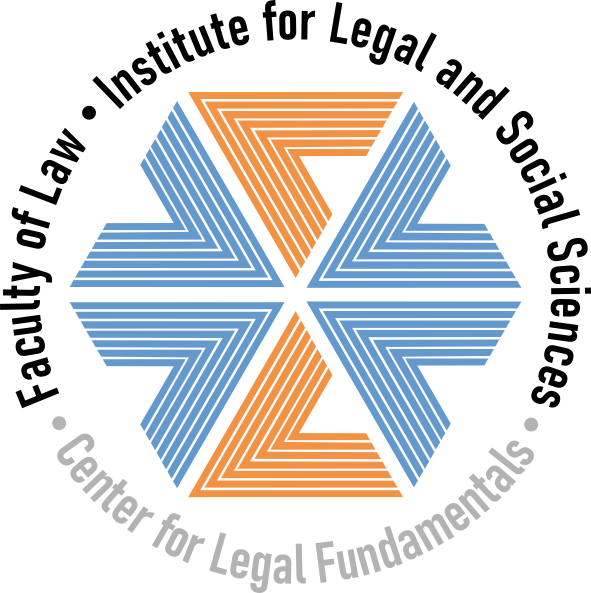Zabrana zlostavljanja u okviru Saveta Evrope
The Prohibition of Abuse Within the Council of Europe
2018
Преузимање 🢃
Поглавље у монографији (Објављена верзија)

Метаподаци
Приказ свих података о документуАпстракт
Почетни кораци у правцу забране мучења, нечовечног и
понижавајућег поступања или кажњавања предузети су на универзалном
нивоу после Другог светског рата. Временом се у оквиру Савета Европе
обезбеђују ефикаснији механизми за заштиту од злостављања, судски
и вансудски, превентивног карактера. Активност се најпре одвија у
члану 3 Европске конвенције о људским правима кроз еволуционистичко
тумачење Европског суда за људска права. Затим се надовезује примена
Европске конвенције против мучења на основу које је формиран Европски
комитет против мучења. Његов основни задатак је да посећује места
где се налазе лица лишена слободе и да упућује препоруке државама
уговорницама ради побољшања положаја тих особа. С обзиром на то да
сe у члану 3 само наводи да нико не сме бити подвргнут злостављању,
стандарди створени праксом Суда и Комитета имају велики значај. На
основу анализе пресуда и извештаја међународних тела, приметно је
да постоји раскорак између нормативног напретка и дешавања... у прак-
си. Непостојање делотворног механизма за санкционисање случајева
злостављања и обештећење жртава, лоши материјални услови и
пренасељеност затворских установа само су неки од уочених проблема
са којима се Србија сусреће.
The initial steps towards the prohibition of torture, inhuman and degrading
treatment or punishment were undertaken on the universal level, after
World War II. Over time, within the Council of Europe, more effective mechanisms
for protection against abuse, judicial and non-judicial of preventive character
are provided. The activity first takes place under Article 3 of the European
Convention on Human Rights through an evolutionary interpretation by the
European Court of Human Rights. Then, the application of the European Convention
against Torture on the basis of which the European Committee against
Torture was established, is being supplemented. Its main task is to carry out
visits to places where persons are deprived of their liberty and to make recommendations
to the States Parties in order to improve the situation of those persons.
Given that Article 3 merely states that no one shall be subjected to abuse,
standards created through the practice of the Court and the Comm...ittee are of
great importance. Based on the analysis of the judgments and reports of international
bodies, it is noticeable that there is a discrepancy between normative
progress and developments in practice. The absence of an effective mechanism
for sanctioning cases of abuse and compensation of victims, poor material conditions
and the overcrowding of prison facilities are just some of the problems
that Serbia faces.
Кључне речи:
Oблици злостављања / Mеханизми заштите / Члан 3 Европске конвенције о људским правима / Европски комитет против мучења / Forms of abuse / Mechanisms of protection / Article 3 of the European Convention on human rights / The European Committee against TortureИзвор:
Perspektive implementacije evropskih standarda u pravni sistem Srbije : zbornik radova. Knj. 8 / Perspectives of Implementa tion of European Standards in Serbian Legal System : Volume VIII, 2018, 335-351Издавач:
- Beograd : Pravni fakultet Univerziteta u Beogradu Centar za izdavaštvo i informisanje
Финансирање / пројекти:
- Перспективе имплементације европских стандарда у правни систем Србије (RS-MESTD-Basic Research (BR or ON)-179059)
Институција/група
Pravni fakultet / Faculty of Law University of BelgradeTY - CHAP AU - Regodić, Aleksandra PY - 2018 UR - https://ralf.ius.bg.ac.rs/handle/123456789/2086 AB - Почетни кораци у правцу забране мучења, нечовечног и понижавајућег поступања или кажњавања предузети су на универзалном нивоу после Другог светског рата. Временом се у оквиру Савета Европе обезбеђују ефикаснији механизми за заштиту од злостављања, судски и вансудски, превентивног карактера. Активност се најпре одвија у члану 3 Европске конвенције о људским правима кроз еволуционистичко тумачење Европског суда за људска права. Затим се надовезује примена Европске конвенције против мучења на основу које је формиран Европски комитет против мучења. Његов основни задатак је да посећује места где се налазе лица лишена слободе и да упућује препоруке државама уговорницама ради побољшања положаја тих особа. С обзиром на то да сe у члану 3 само наводи да нико не сме бити подвргнут злостављању, стандарди створени праксом Суда и Комитета имају велики значај. На основу анализе пресуда и извештаја међународних тела, приметно је да постоји раскорак између нормативног напретка и дешавања у прак- си. Непостојање делотворног механизма за санкционисање случајева злостављања и обештећење жртава, лоши материјални услови и пренасељеност затворских установа само су неки од уочених проблема са којима се Србија сусреће. AB - The initial steps towards the prohibition of torture, inhuman and degrading treatment or punishment were undertaken on the universal level, after World War II. Over time, within the Council of Europe, more effective mechanisms for protection against abuse, judicial and non-judicial of preventive character are provided. The activity first takes place under Article 3 of the European Convention on Human Rights through an evolutionary interpretation by the European Court of Human Rights. Then, the application of the European Convention against Torture on the basis of which the European Committee against Torture was established, is being supplemented. Its main task is to carry out visits to places where persons are deprived of their liberty and to make recommendations to the States Parties in order to improve the situation of those persons. Given that Article 3 merely states that no one shall be subjected to abuse, standards created through the practice of the Court and the Committee are of great importance. Based on the analysis of the judgments and reports of international bodies, it is noticeable that there is a discrepancy between normative progress and developments in practice. The absence of an effective mechanism for sanctioning cases of abuse and compensation of victims, poor material conditions and the overcrowding of prison facilities are just some of the problems that Serbia faces. PB - Beograd : Pravni fakultet Univerziteta u Beogradu Centar za izdavaštvo i informisanje T2 - Perspektive implementacije evropskih standarda u pravni sistem Srbije : zbornik radova. Knj. 8 / Perspectives of Implementa tion of European Standards in Serbian Legal System : Volume VIII T1 - Zabrana zlostavljanja u okviru Saveta Evrope T1 - The Prohibition of Abuse Within the Council of Europe EP - 351 SP - 335 UR - https://hdl.handle.net/21.15107/rcub_ralf_2086 ER -
@inbook{
author = "Regodić, Aleksandra",
year = "2018",
abstract = "Почетни кораци у правцу забране мучења, нечовечног и
понижавајућег поступања или кажњавања предузети су на универзалном
нивоу после Другог светског рата. Временом се у оквиру Савета Европе
обезбеђују ефикаснији механизми за заштиту од злостављања, судски
и вансудски, превентивног карактера. Активност се најпре одвија у
члану 3 Европске конвенције о људским правима кроз еволуционистичко
тумачење Европског суда за људска права. Затим се надовезује примена
Европске конвенције против мучења на основу које је формиран Европски
комитет против мучења. Његов основни задатак је да посећује места
где се налазе лица лишена слободе и да упућује препоруке државама
уговорницама ради побољшања положаја тих особа. С обзиром на то да
сe у члану 3 само наводи да нико не сме бити подвргнут злостављању,
стандарди створени праксом Суда и Комитета имају велики значај. На
основу анализе пресуда и извештаја међународних тела, приметно је
да постоји раскорак између нормативног напретка и дешавања у прак-
си. Непостојање делотворног механизма за санкционисање случајева
злостављања и обештећење жртава, лоши материјални услови и
пренасељеност затворских установа само су неки од уочених проблема
са којима се Србија сусреће., The initial steps towards the prohibition of torture, inhuman and degrading
treatment or punishment were undertaken on the universal level, after
World War II. Over time, within the Council of Europe, more effective mechanisms
for protection against abuse, judicial and non-judicial of preventive character
are provided. The activity first takes place under Article 3 of the European
Convention on Human Rights through an evolutionary interpretation by the
European Court of Human Rights. Then, the application of the European Convention
against Torture on the basis of which the European Committee against
Torture was established, is being supplemented. Its main task is to carry out
visits to places where persons are deprived of their liberty and to make recommendations
to the States Parties in order to improve the situation of those persons.
Given that Article 3 merely states that no one shall be subjected to abuse,
standards created through the practice of the Court and the Committee are of
great importance. Based on the analysis of the judgments and reports of international
bodies, it is noticeable that there is a discrepancy between normative
progress and developments in practice. The absence of an effective mechanism
for sanctioning cases of abuse and compensation of victims, poor material conditions
and the overcrowding of prison facilities are just some of the problems
that Serbia faces.",
publisher = "Beograd : Pravni fakultet Univerziteta u Beogradu Centar za izdavaštvo i informisanje",
journal = "Perspektive implementacije evropskih standarda u pravni sistem Srbije : zbornik radova. Knj. 8 / Perspectives of Implementa tion of European Standards in Serbian Legal System : Volume VIII",
booktitle = "Zabrana zlostavljanja u okviru Saveta Evrope, The Prohibition of Abuse Within the Council of Europe",
pages = "351-335",
url = "https://hdl.handle.net/21.15107/rcub_ralf_2086"
}
Regodić, A.. (2018). Zabrana zlostavljanja u okviru Saveta Evrope. in Perspektive implementacije evropskih standarda u pravni sistem Srbije : zbornik radova. Knj. 8 / Perspectives of Implementa tion of European Standards in Serbian Legal System : Volume VIII Beograd : Pravni fakultet Univerziteta u Beogradu Centar za izdavaštvo i informisanje., 335-351. https://hdl.handle.net/21.15107/rcub_ralf_2086
Regodić A. Zabrana zlostavljanja u okviru Saveta Evrope. in Perspektive implementacije evropskih standarda u pravni sistem Srbije : zbornik radova. Knj. 8 / Perspectives of Implementa tion of European Standards in Serbian Legal System : Volume VIII. 2018;:335-351. https://hdl.handle.net/21.15107/rcub_ralf_2086 .
Regodić, Aleksandra, "Zabrana zlostavljanja u okviru Saveta Evrope" in Perspektive implementacije evropskih standarda u pravni sistem Srbije : zbornik radova. Knj. 8 / Perspectives of Implementa tion of European Standards in Serbian Legal System : Volume VIII (2018):335-351, https://hdl.handle.net/21.15107/rcub_ralf_2086 .


